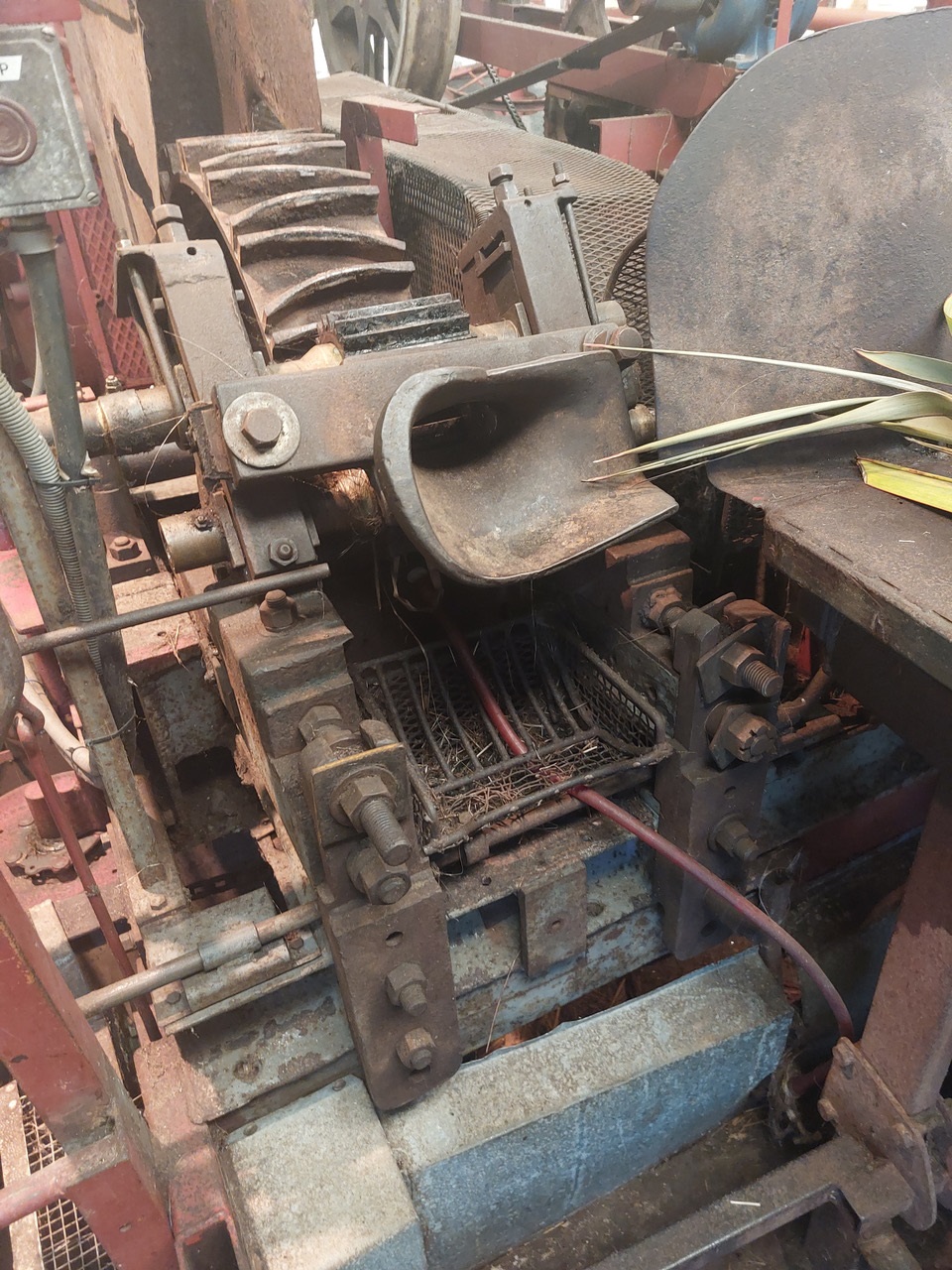
Victor and Eileen Taylor have immersed themselves in Foxton’s flax industry history, and have stepped up to be guides of the town’s Flax Stripper Museum.

The flax stripping machines at Foxton, one of only two in the country and the only one still working.
Photos Janine Baalbergen
The museum has been closed to the public for some time, largely because of a lack of enthusiastic and knowledgeable guides. Not now, as Victor and Eileen have taken on the role. Both have a passion for history, and Victor grew up on Harbour Street. He can still vividly recall the racket the machines used to make.
“I lived in Foxton until 7th form and then left for Christchurch to train as a teacher,” he says. “I liked it so much down there I stayed for 30 years.”
Now he’s back, leading visitors past the many pictures with fascinating captions, as well as machinery in the museum explaining the importance of flax – phormium tenax or harakeke – to the town.
“The flax industry boomed here 100 years ago.”
Victor also spent 17 years teaching in Palmerston North and was caretaker of Foxton School after that.
“I had some time on my hands and wondered what to do with it,” he says. “Eileen and I use the library a lot and tried to find out what was going on with this museum. We felt it was a shame it wasn’t open.”
So a couple of months ago they started Saturday afternoon guided tours through both the flax stripper and the nearby wool factory museums.
“Though I lived next door for so long, I never came inside to have a look.”
He says flax stripping was very labour intensive.
“They did this by hand, using a sickle. A flax cutter could carry bundles of 35-40 kilos under their arms.”
There were several mills and thousands of acres of flax swamps between Foxton and Moutoa.
“When I was young the industry was already in decline,” he says.
Foxton’s flax benefited from a downturn in the flax industry elsewhere, especially in the Philippines due to cyclones. But the town’s flax was exceptionally strong, making it ideal for high quality twine and rope.
The museum is the proud owner of a flax stripper machine, one of only two left in the country and the only one still working. It’s very loud, so Victor doesn’t want to turn it on for visitors just yet.
“The hearing of many workers using this machine was severely impaired and in those days there were no health and safety measures, so a few workers also lost fingers to the machine.”
He recalls that those using the flax stripper machine worked 12-hour days, pushing the large flax leaves through it.
By 1912 there were 39 mills in Foxton, operating 52 stripping machines.
The factory on Harbour Street later housed the wool and carpet factory that also used flax to make mats, about which the museum also has a lot of information.
A list at the museum shows who worked in the factory over the years.
“To my surprise there are quite a few Taylors on the list, though I knew I had family members working there,” says Victor.
He has already found that the visitors to the flax stripper museum are diverse.
“There are engineers interested in the machines, weavers who want to know more about the techniques used, as well as crafts people. And then there are locals who had family members working here, and overseas visitors, too.”
While Victor uses his gift of the gab to entertain visitors, wife Eileen hops to the main road to tell people the museum is open and to come and have a look.
Victor and Eileen are there every Saturday afternoon from 1pm-3 pm. You can find the museum behind the library and museum complex – Te Awahou Nieuwe Stroom – on Main Street, Foxton, beside the windmill.
OTHER STORIES

.jpg)






